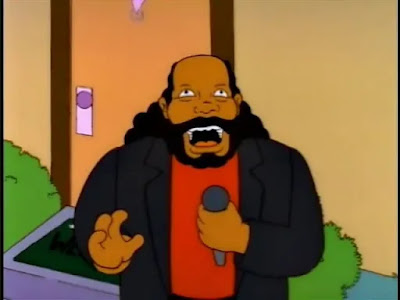I was inspired by a podcast called The 500 hosted by Los Angeles-based comedian Josh Adam Meyers. His goal, and mine, is to explore Rolling Stone Magazine's 2012 edition of The 500 Greatest Albums of All Time.
Album: #281
Album Title: My Life
Artist: Mary J. Blige
Genre: R&B, Hip-Hop, Soul
Recorded: Five New York Studios
Released: November, 1994
My age at release: 29
How familiar was I with it before this week: Not At All
Is it on the 2020 list? Yes, at #126, moving up 155 places from the 2012 list
Song I am putting on my Spotify Playlist: You Bring Me Joy
The Sophomore Jinx, sometimes called the Sophomore Slump, is a term typically associated with professional sports. In that context, it refers to athletes who have a superb rookie season and then fail to meet the same lofty expectations in their second campaign. Consider the example of Finnish ice hockey player Teemu Selanne, who set the NHL record for goals scored by a rookie in 1993 when he potted a league-leading 76. The following season he scored only 25. Granted, he finished his 21-season, Hall of Fame career with 684 tallies -- enough for 12th all-time in NHL history – so the slump was an anomaly.
 |
| Teemu Selanne in his rookie season |
The term also applies to university students who, after having a successful first year, face significant challenges with the second year of their program, with plummeting grades and, often, a change to their course trajectory. I am familiar with this phenomenon. I did quite well in my first year and, in 1988, I was excited to pursue a degree in Psychology. My second year was abysmal as the challenges in the required mathematics courses ramped up. By third year, I had switched my studies to English and History, which played to my strengths.In a 2020 interview, singer, songwriter and actress Mary J. Blige admitted that she was worried about a Sophomore Slump when she returned to the studio to record her second album. Her first record, What's The 411?, had been a critical and commercial success in 1992.
It reached number one on the R&B/Hip-Hop chart and number six on the Billboard Top 200. The album's five singles were so well received that a second album, featuring remixes of the most popular tracks, was released in 1993.
Blige's debut record fell into a genre of pop music called "new jack swing", a style best described as a fusion of hip-hop, dance-pop and classic rhythm and blues. Coined in 1987, new jack swing often used sampled beats or electronic drum machines as the foundation for a light melody line and clearly enunciated vocals.
When Blige entered the studio in the winter of 1993, she had more than a sophomore slump on her mind. She was battling clinical depression as well as alcohol and drug dependency while navigating an abusive relationship with singer K-Ci Haley. Blige had also decided to make two significant changes to her sound. She moved away from the new jack swing sound that had made her a star and began writing lyrics that were introspective and deeply personal.
 |
| K-Ci and Blige (1992) |
Her risks paid off and 1994’s My Life was a massive commercial success. It spent eight weeks at the number one spot on the Hip-Hop/R&B Albums chart and was certified triple platinum (three million copies sold) within its first year. It was also well received by critics. Not only is it on Rolling Stone magazine's 500 list, it made similar lists published by Time, Blender, Entertainment Weekly and Vibe.
Blige has earned the monikers, "The Queen of Hip-Hop Soul" and "The Queen of R&B". She has won an Emmy, nine Grammys, four American Music Awards, and 12 Billboard Music Awards, including the Icon honours. She was nominated for two Academy Awards in 2017 for the historical drama Mudbound and the film's original song, Mighty River. It was the first time a performer has been nominated for acting and songwriting in the same year.
With 15 successful studio albums under her belt, Blige's star continues to rise. Her jaw-dropping performance at last year's Super Bowl made it clear that the 52-year-old singer has plenty left in the tank and her earlier concerns about a Sophomore Slump were unwarranted. However, sometimes a little apprehension and uncertainty can fuel great work.




.jpg)








.jpg)



.png)








.jpg)
.png)









